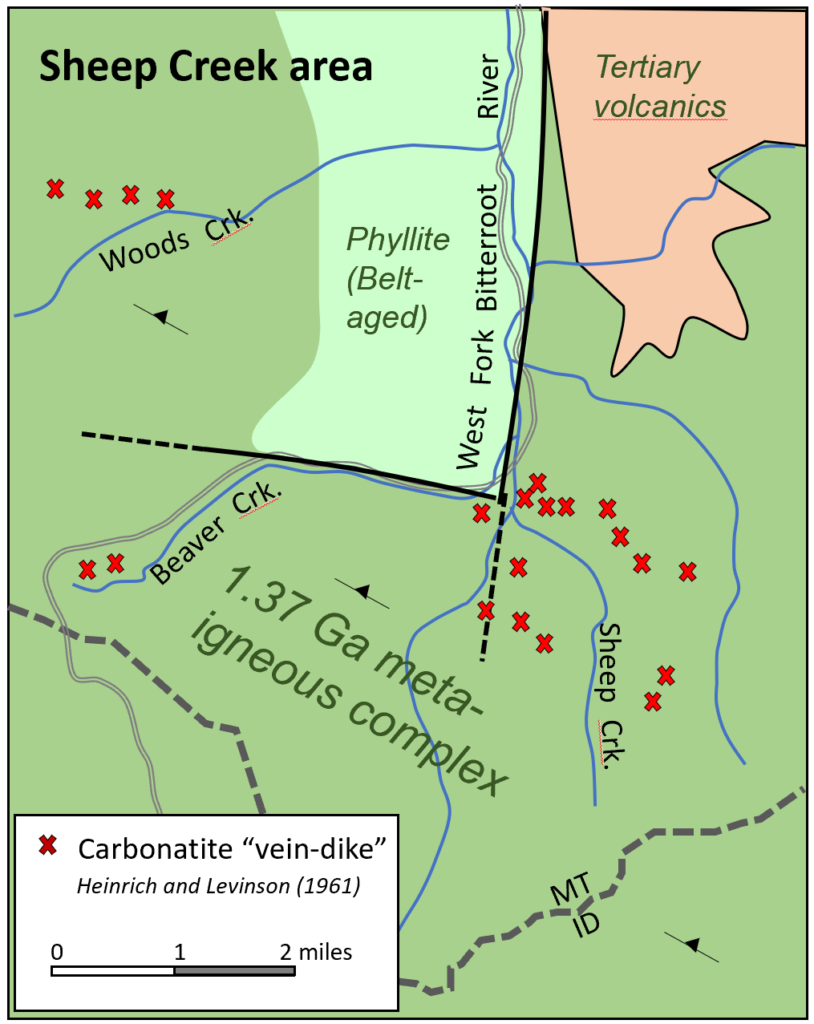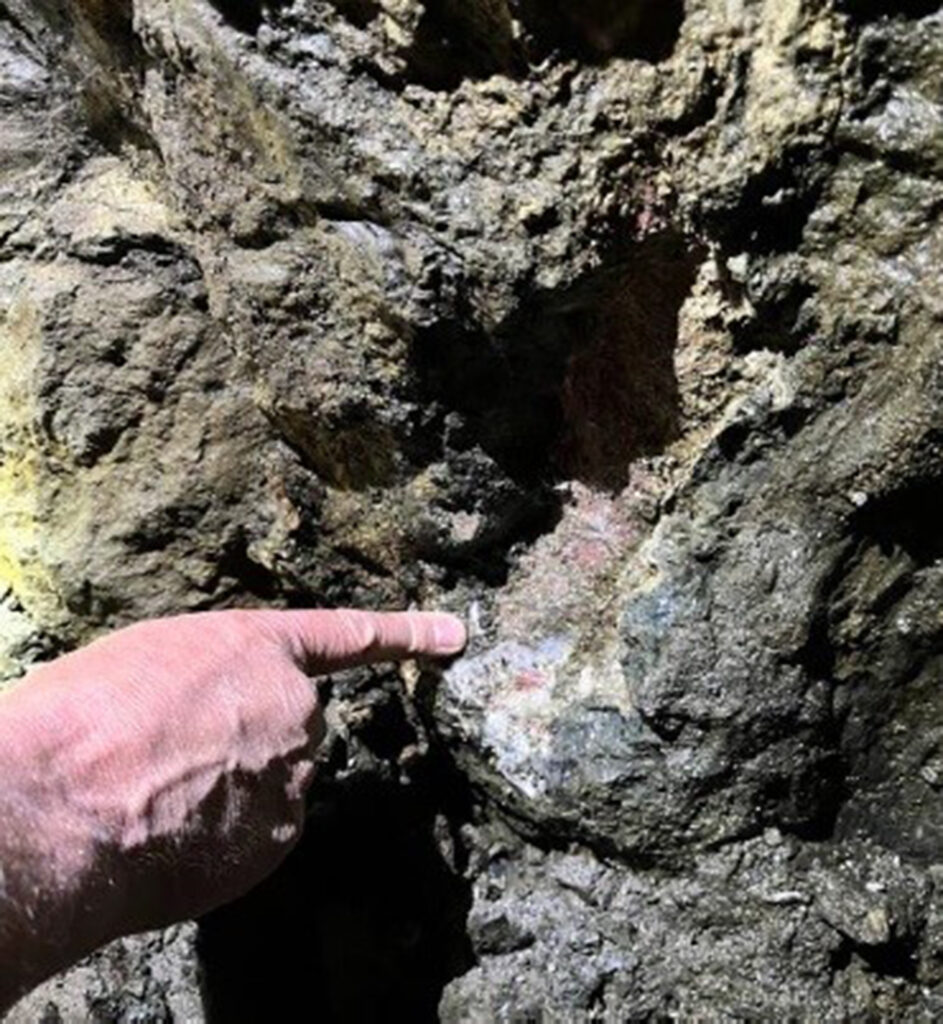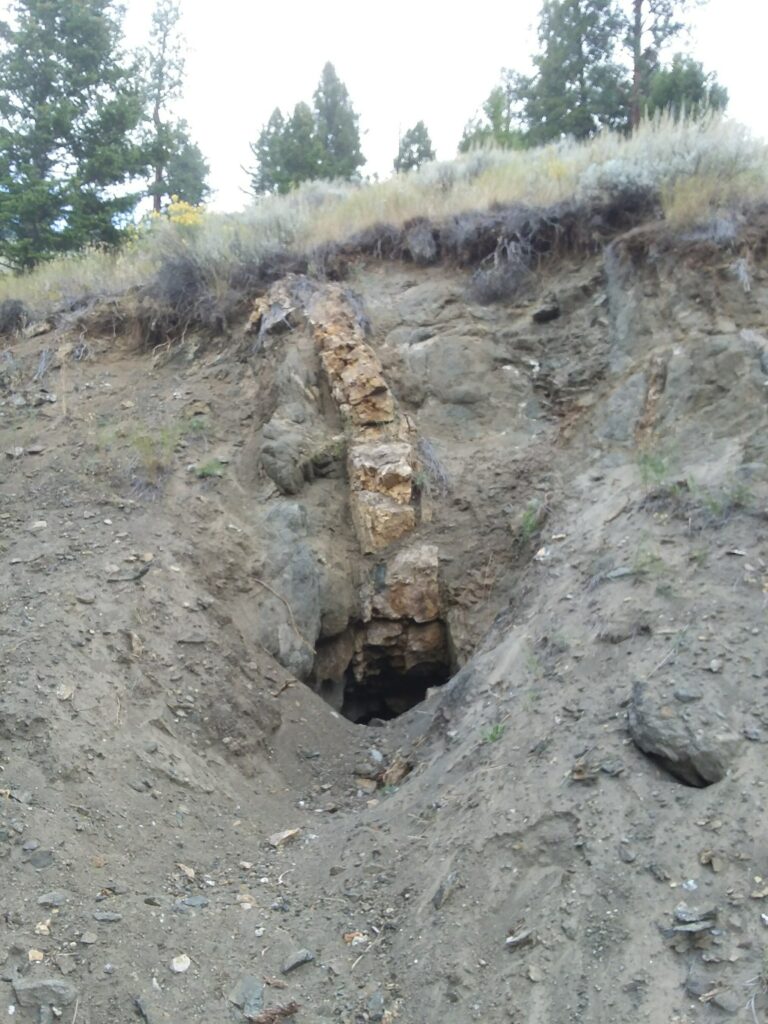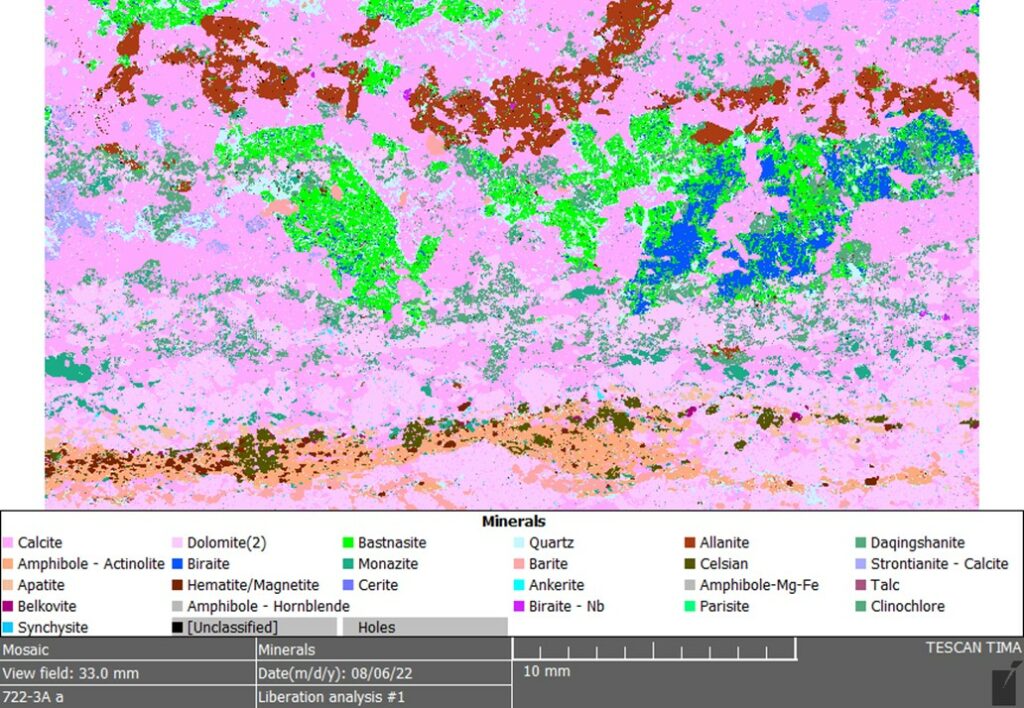Sheep Creek
Sheep Creek is in Ravalli County, southwest Montana. The property encompasses 336 lode claims representing approximately 7,277.5 acres / 11.37 square miles of total land package. The claims are on multiple-use ground administered by the U.S. Forest Service. Government maintenance fees are current for the 2023-2024 assessment year and the claims can be renewed annually. Exploration activities performed by US Critical Materials Corp. have identified more than 60 carbonatite dikes in the Sheep Creek district.
- Sheep Creek is in Ravalli County, southwest Montana.
- The property encompasses 336 lode claims representing approximately 7,277.5 acres / 11.37 square miles of total land package.
- The claims are on multiple-use ground administered by the U.S. Forest Service.
- Government maintenance fees are current.
- Exploration activities by US Critical Materials Corp. have identified more than 60 carbonatite dikes in the district.
- Sheep Creek has nearby roads, power, and water supply.
- Montana is a mining-friendly state.
- Negligible levels of thorium eliminate the need for NRC permitting.
- Sheep Creek is one of the highest-grade light rare earth projects in the United States.

Carbonatites
For nearly 50 years, *carbonatites (rare, mantle-derived, igneous rocks for the most part which are composed of carbonate minerals such as calcite and dolomite) have been the primary source of niobium and rare-earth elements (REEs), particularly the light REEs, including La, Ce, Pr, and Nd.
Over 50 surface carbonatite occurrences have been documented and sampled at Sheep Creek. This is an unusually high number. The Sheep Creek carbonatites are up to three meters wide and can be followed for more than 200 meters along strike. Important ore minerals identified include ancylite, allanite, monazite, and columbite. The dikes are valuable for their contained light rare-earth elements and other strategic metals.
Most minerals are carbonates, fluorocarbonates, oxides, hydroxides, phosphates, and hydroxyl-silicates, which will be easy to get into solution with either a strong acid or base.

USGS Mapping and Exploration of Sheep Creek
As part of the USGS Earth Mapping Resource Initiative (EMRI), the USGS, in cooperation with the Montana Bureau of Mines, is conducting a high-resolution flyover, an aeromagnetic and aero-radiometric survey at the Sheep Creek, Montana property. Detailed geologic mapping and geochemical sampling will also be conducted to further define rare earth mineralization already identified.
According to the USGS, “The goal of Earth MRI is to improve our knowledge of the geologic framework in the United States and to identify areas that may have the potential to contain undiscovered critical mineral resources. Enhancement of our domestic mineral supply will decrease the nation’s reliance on foreign sources of minerals that are fundamental to our security and economy.”

Gallery
Rocks Have Been Identified As Carbonatite Based Upon These Known Criteria:
- Primarily >50 volume percent carbonate minerals, primarily calcite and/or dolomite, and containing <20 weight percent quartz.
- Chondrite normalized enrichment in light rare-earth elements (LREE).
- Chondrite normalized plot of the rare-earth elements (REE) shows no europium (Eu) depletion.
- Barium (Ba) and Strontium (Sr) abundances are generally high.
- Potassic (K) fenitization, alteration by relatively low-temperature metasomatic processes.
High Rare-Earth Grades
The initial exploration programs were successful in identifying potentially economic grades of rare-earth elements. Grab and rock chip sampling of carbonatites indicate up to 20.1% total rare-earth elements (“REE”), including 3.3% (32,750 ppm) combined neodymium and praseodymium, plus credits in niobium and other strategic metals.
The USCM deposits contain at least thirteen of the “critical risk” minerals defined by the current administration. These minerals include Cerium, Dysprosium, Europium, Gadolinium, Lanthanum, Neodymium, Niobium, Praseodymium, Scandium, Strontium, Yttrium, barium and Gallium.

